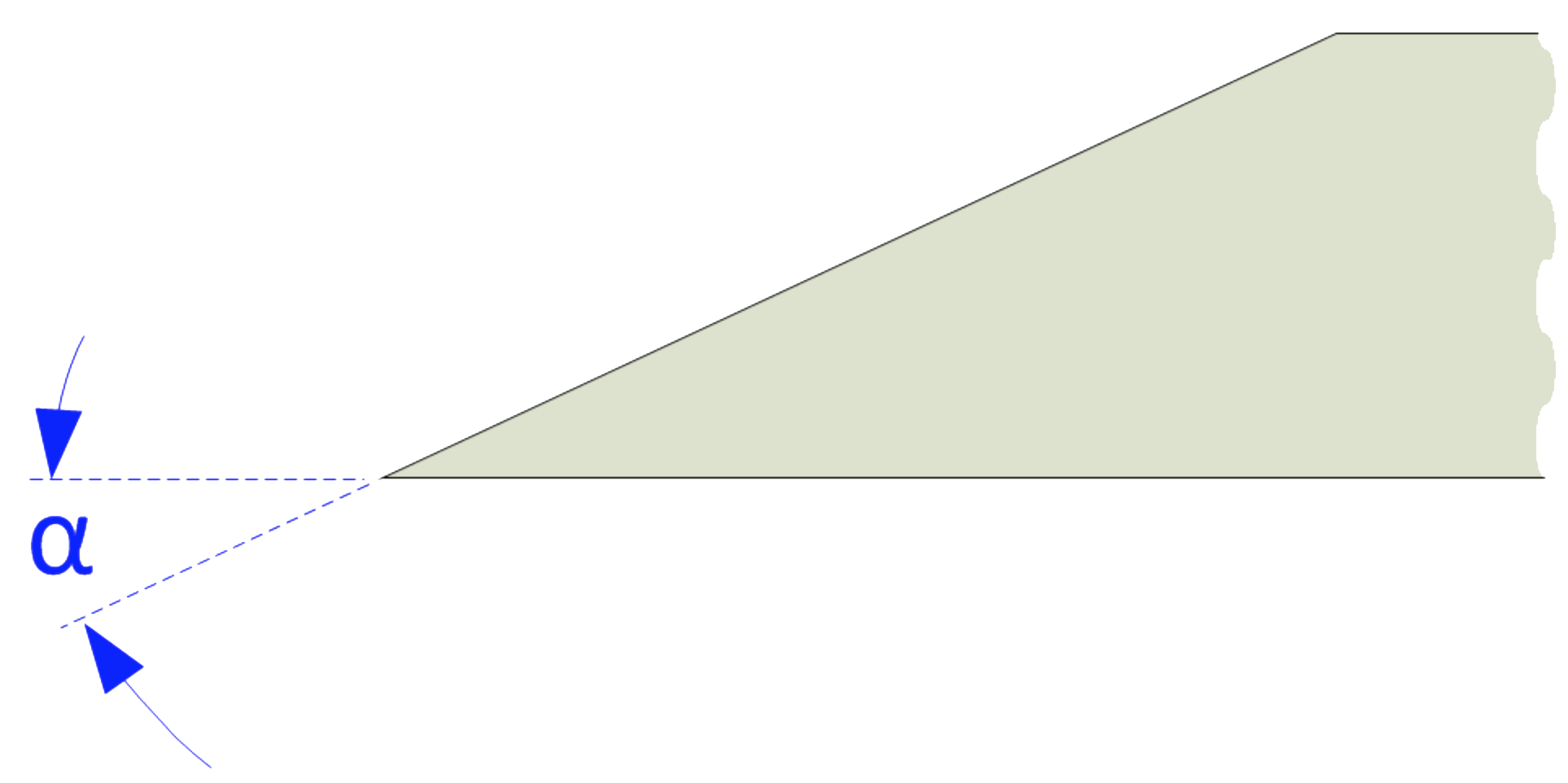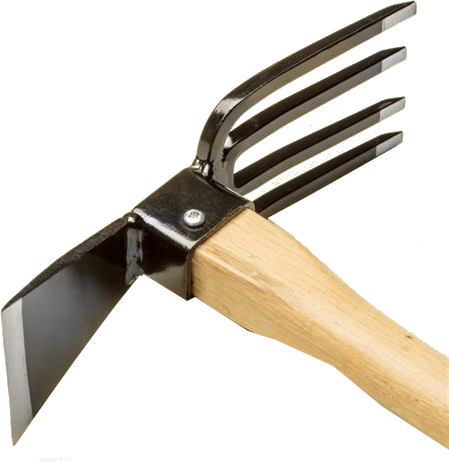

|

|
Japanese Gardening Hoe & Tiller |


Sharpen the outside edge, and deburr the inside edge. This is noted in the picture to the left.
Unlike a garden hoe, this does not set the angle for the tool's usage in a way as to make the tool's use problematic.
A 6" smooth cut machinist’s hand file is useful to carry in your gardening tools box. Use it to resharpen the hoe as needed throughout the gardening activity.
When a garden is used as a place to pause for thought, that is when a Zen garden comes to life. When you contemplate a garden like this it will form as lasting impression on your heart.
Muso Soseki
A micro bevel can be added in the field by the gardener for quick resharpening. Even if the tool was sharpened in the shop using a Tormek, the gardener could use a machinist's hand file for a quick touch-up.
Shaping the edge
Japanese gardening tools are typically made from high-carbon steel which is not terribly hard. When this is combined with an acute angle like 30°, it is easy to damage the edge.
Changing this tool to have a higher angle like 45° is not recommended. Instead, the gardener should use a hand axe (aka, a hatchet) for work in the garden which requires heavy chopping or where the blade could come into contact with hard objects such as gravel. These could impart significant damage to the blade of this tool.
For removing large nicks in the edge, a Tormek grinder or a 12-14" bastard file machinist’s hand file will work sufficiently well. Experience has shown that either of these approaches works quite well in removing nicks from the edge after my wife or children have used the tool.
Using a bench or angle grinder is not recommended as this will surely overheat the tool, removing the temper from the edge. Additionally, the shaping of the edge is difficult to control.
Sharpening the edge
If using a Tormek, the Tormek jigs used for holding wood plane blades work well for holding this tool. Also, the Tormek SG-250 grindstone works well for sharpening this tool.
If you choose to use a machinist’s hand file,
Micro bevel Notes:
The micro bevel makes the resharpening of this tool easier. If you sharpen the tool using a machinist's hand file, this is recommended. It is less critical if you use a Tormek grinder for the sharpening.
Ongoing Maintenance
Be sure to remove all caked-on dirt. A wire brush or putty knife can be useful for this. A well-kept tool will last your lifetime, and will still be usable by your children (and maybe your grandkids).

Sap can be removed using a solvent. Acetone works well, but be sure to wear protective clothing as this is not kind to your body, and be sure the area is well ventilated.
After using any solvent, be sure to apply a thin coat of camellia oil to the tool. I like the spray bottle of camellia oil sold by Tools for Working Wood.
Some advocate using boiled linseed oil (BLO), but BLO often has heavy metals or other bad chemicals added for drying agents, and these are not good for you to handle, nor would they be good for the plants on which you might use this tool.
If the tool was exposed to any diseased plants or soil which is infected with pests, give it a quick wash in diluted bleach (1 part bleach to 8 parts water), and then rinse with plain water. Be sure to dry afterwards, and apply a thin coat of camellia oil.
Tools in Storage
Gardening tools often get stored for a while after sharpening, so it is recommended to oil the sharpened surface with camellia oil. (Indeed, all unpainted surfaces would benefit from this.)
Petroleum jelly is another option.